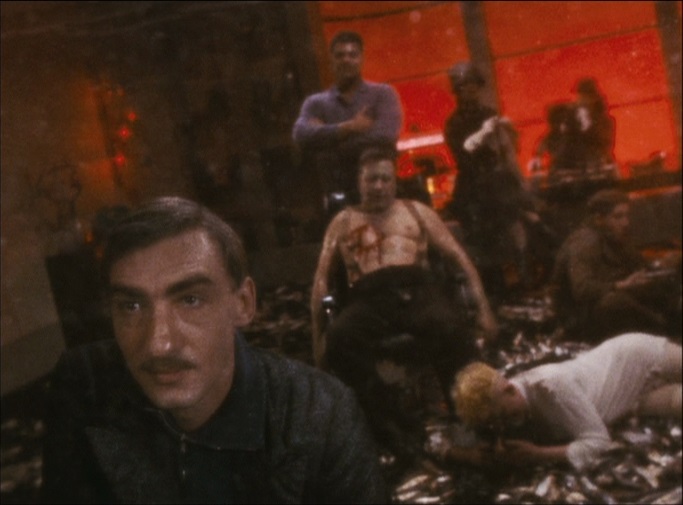
Produced between 1979 and 1980, Berlin Alexanderplatz is Fassbinder’s masterpiece, and an epic in scope beyond the work of any other film in his prolific career. Shot by Xavier Schwarzenberger on 16mm, Berlin Alexanderplatz was lit and exposed with a highly saturated amber color, and features shadows heavily in frame design in reference to the Weimar era filmmakers responsible for the Expressionist movement. The music and sound design by Peer Raben work to preserve the highly texturalized rendering of the media in Doblin’s novel. These two technical approaches to the film by Fassbinder and his collaborators root his film heavily in the source material and the history of Germany.
With those two principal technical devices in place, Fassbinder constructs his most naturalist and subtly nuanced melodrama around the story of Franz Biberkopf, his lover Mieze and his nemisis/”true love” Reinhold. In the first 13 hours of the film the story itself ebb and flows like a modern kammerspiel film, dense with contemporary political trappings and historical reassessments. Such an achievement marks this particular film as Fassbinder’s most mature work.
But it is the Epilogue of Fassbinder’s film, which concerns me. In the Epilogue, Fassbinder removes all the dramatic trappings of the film in favor of a post-modern surrealism which he had not employed since 1970 with Die Niklashauser Fart; a film heavily indebted to Godard’s 2 0r 3 Things I Know About Her and Made In U.S.A. The freedom of surrealism and dreamscapes allow Fassbinder’s mind to run rampant, but not away from the story of Franz Biberkopf. The Epilogue is rooted narratively into Franz’s stay at a mental asylum, and these fantastic modernist dream scenes are to be taken as the character’s fevered nightmares, a subconcious storm made concrete in images.
Yet these nightmares move beyond the typical “dream sequences” of most mainstream movie making and instead become an allegory for German society itself, in the same vein as Syberberg’s epic experimental film Hitler: A Film From Germany. Like Syberberg, Fassbinder will weave layer upon layer of metaphor and iconography into his sequences, tracing the rise and fall of German Nationalism, Nazism, and the Cold War. However, Fassbinder is able to make these “experimental” mechanisms applicable to the characters of his narrative by placing them within the environment of these surreal happenings. This gives every sequence in the nightmare a double meaning and works as a double jeopardy for the audience who now have more at stake than before.
Looking back at the film now, at the highly stylized frame composition, it becomes clear that Fassbinder had been looking not just to the work of Hans Jurgen-Syberberg, but to the films of Pasolini and Bunuel; that these “dream scenes” are functioning not just on two levels, but three. In every shot it is possible to see the influence of the surrealists, the expressionists, the neo-realists and the new wave. In this way film history becomes just as important as German history, which by the twentieth century had become heavily intertwined anyway, so the device becomes more reflexive still.
To go beyond the critical and formal trappings of this portion of Berlin Alexanderplatz, it is perhaps even more impressive that this interruption of the films established style and narrative makes sense, and that as an audience member, one does not lose any of one’s investment in the films characters. As far as film construction is concerned, this is Fassbinder’s most risky and most effective, given all that he has at stake.
